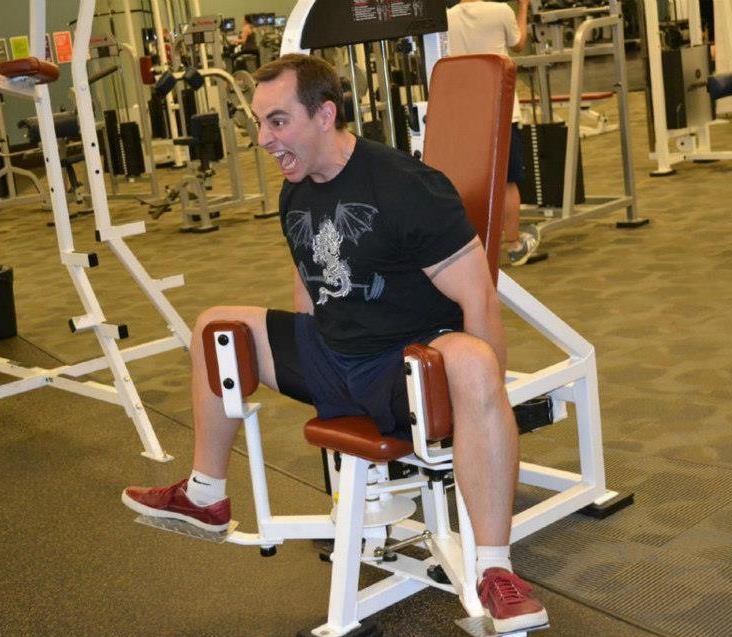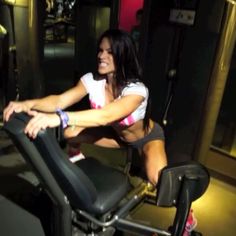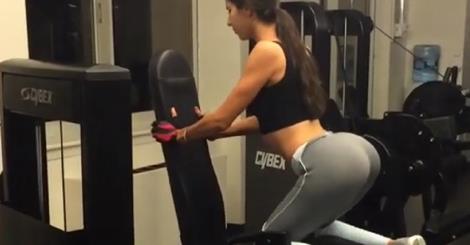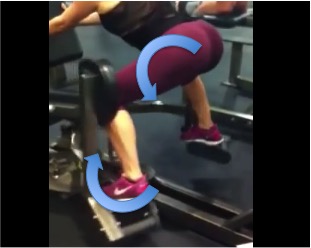Exercise You Could Probably Do Without: Backwards Facing Adductor Machine
Part of being in the fitness industry is seeing what everyone else does for their workouts in some form or another. The most popular folks on social media seem to be the ones who are very photogenic, take a lot of pics and videos from unique angles, and highlight their……assets, very well.
One cool thing about seeing everyone doing their thing is seeing some creative exercises that I wouldn’t have thought about before. Hooking bands up to a HammerStrength machine to give it some different overload? Cool. Using some variations in posture and positioning to get some new benefits from an old standard exercise? Wicked. Tsunami bars? Crazy yet I like it. Some flow-based warm ups I’ve never even considered before? Awesome.
Then there’s the exercises that just make me scratch my head. Look, I love seeing creativity in the name of making progress, and I’m all for someone doing something just for the sake of trying it out. I get it. I don’t want to ever dissuade someone from trying something to see what it’s like because that’s how we make progress and see new things from an angle we never saw before, which brings me to the exercise of this post, the backwards facing adductor machine.
I have a special affinity to the adductor machine, as anyone could see from my Facebook profile pic.
It’s an exercise machine that has a very small range of possible uses, and could be very beneficial for someone recovering from a groin injury, and also for someone who wants to involve frontal plane movements without relying on the amount of loading or stability required with body weight movements.
Somewhere along the lines, this wasn’t good enough so people started to use them by facing into the back pad. From my understanding, this was an awesome method some figure competitors with large social media followings started to involve, primarily because they could involve some much better camera angles and close-ups of flexing glutes than the other way, which instantly meant more shares and likes.
Now, I fully understand that likes is the new currency in the social media world, and if these videos set a new PR in engagement, it’s going to cause a lot of people to pay attention and to copy it. The downside is the movement performed the way it is on most adductor machines could create some significant knee issues.
When doing this exercise, there’s a significant external rotation of the femur. A downside to the reverse facing machine is that the foot pad is usually in a fixed line of action with the hips in the forward facing manner, meaning as the hips rotate out, the foot follows along. With the reverse position, the hips externally rotate, but the foot pad actually internally rotates, leading to a position where the toes wind up pointing inward.
This counter-current rotation between the femur and the tibia is a known mechanism of injury for structures in the knee such as the ACL and meniscus, and could also increase some irritation to the MCL and LCL. The knee doesn’t tend to function so well in a rotation movement, much more preferring the flexion/extension movements. The rotation that the knee can go through is pretty minimal, usually about 5-20 degrees before it runs out of freedom and leads to injury. If using the machine in this matter, that means you would only have 10 degrees of external rotation and 10 degrees of internal rotation before you ran out of room, which means you’d only really move a few inches before the risk of knee injury increased significantly.
I put together a short video to outline how this affects the knee joint, and also included a couple of equally effective exercises that don’t cause as much of a potential for injury.
One option that could significantly erase this injury risk would be if the foot pads had the ability to rotate in order to allow the tibia to follow the movement of the femur. I haven’t seen any manufacturers who do this though, so if any are reading this it’s a golden opportunity to make an exclusive add-on to the existing machine, and all I ask is a 10% consulting fee for any and all gross sales going forward on my idea.
Another option to reduce risk would be to essentially pivot on your toes versus going with flat feet on the foot supports. This would allow much less tibial rotation under the femur, and reduce the risk significantly, which would then also allow for all the #belfies. All of them.
Let me know what you think with a comment below.





6 Responses to Exercise You Could Probably Do Without: Backwards Facing Adductor Machine